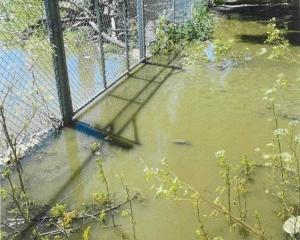
The technology behind this latest innovation has the potential to add a significant product to our forest industries. So how does this work? In fact it is a major breakthrough using our forestry resources to boost a low-cost energy source to replace fossil fuel. That is both domestic and industrial space heating and electricity production.
The product, known as torrefied pellets, is the next step up from biomass wood chip now replacing coal-fired boilers throughout New Zealand. Thanks to the latest trials by Scion Research and Genesis Energy at its Huntly Power Station up to 550,000 tonnes of imported coal can be replaced through little modification to at least two of its 240-megawatt (MW) boilers.
And Genesis Energy is dead keen to go ahead with a permanent supply.
In the trial at Huntly 1000 tonnes of torrefied pellets were imported from Canada, but in future these could be processed by a plant here. The project basically also backs up the government’s proposal for added electricity supply during droughts and extreme weather events — read climate change.
There has been little mention of the Lake Onslow scheme lately, although alternative solar and wind energy still appear in the mainstream media.
Replacing coal for electricity cuts a massive tonnage of greenhouse gases being emitted into the atmosphere, not counting carbon miles. Wood biomass equates to less that 10% of CO2 emissions compared with coal. And renewable forests continue to sequester carbon.
Much of this work is to do with Scion’s research on torrefaction of wood residues into high heat-producing pellets equal to coal. Genesis reports that only two of its 240MW boilers would provide the extra power needed in an average dry year.
Wood chip supplies for boiler conversions have steadily increased, but so far there has been little development for black pellets. This could make a huge difference to New Zealand’s energy supply based on the sustainable renewable exotic forestry industry. Also a boost in jobs. However, it is recognised by stakeholders this would mean using more low-grade logs instead of exporting them to China.
At present, mostly pulp log, reject timber and slash are used for space heating, now known as white wood biomass. Development of torrefaction plants could be established with little delay, and plants have a low carbon footprint compared with other producers .
Scion research scientist Peter Hall, looking at speculative figures, believes it possible to establish a torrefaction plant capable of producing around 50,000 tonnes of pellets annually (minimal volume for Huntly in a dry year). Cost: an estimated $70 million. At present, hydro-electricity supplies 55.2% of the nation’s power, gas 21.8%, geothermal 12.2%, wind 7.6%, and biogas, waste heat and wood only 1.7%.
Peter Hall explains the off-gases from torrefaction, "which contain a lot of CO2, are captured and burned to provide the required heat, or at least most of it. Depending on the moisture content of the biomass (chip or hogged residue) coming in there may need to be some energy derived by burning some of the incoming feedstock stream".
Ideally, a torrefaction plant established within 125km of Huntly would be the most cost-effective, particularly if slash from Gisborne and Hawke’s Bay could be used after the cyclones.
— Jim Childerstone is an independent forestry consultant.











